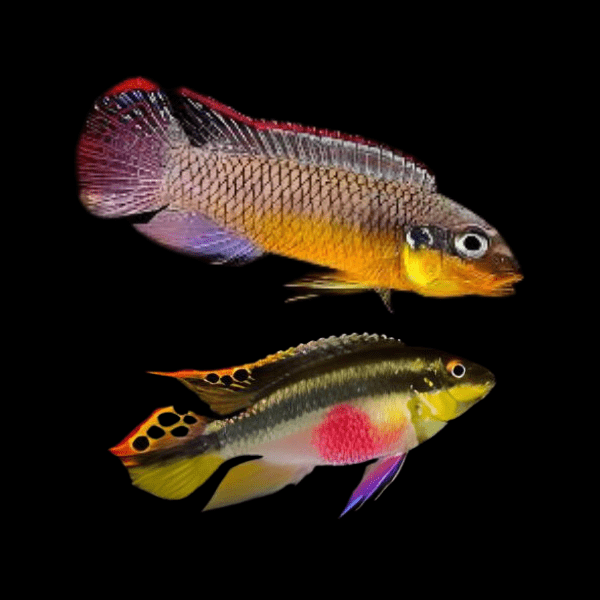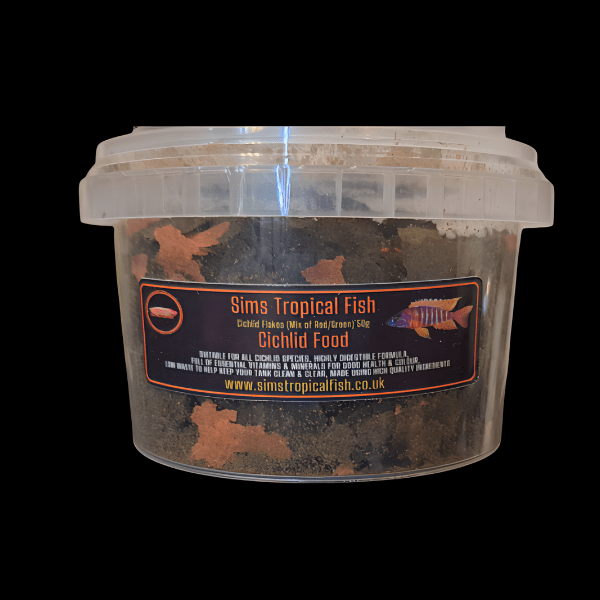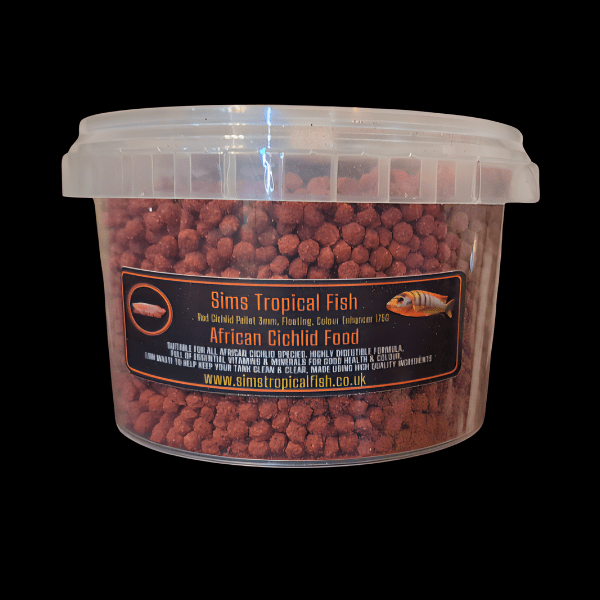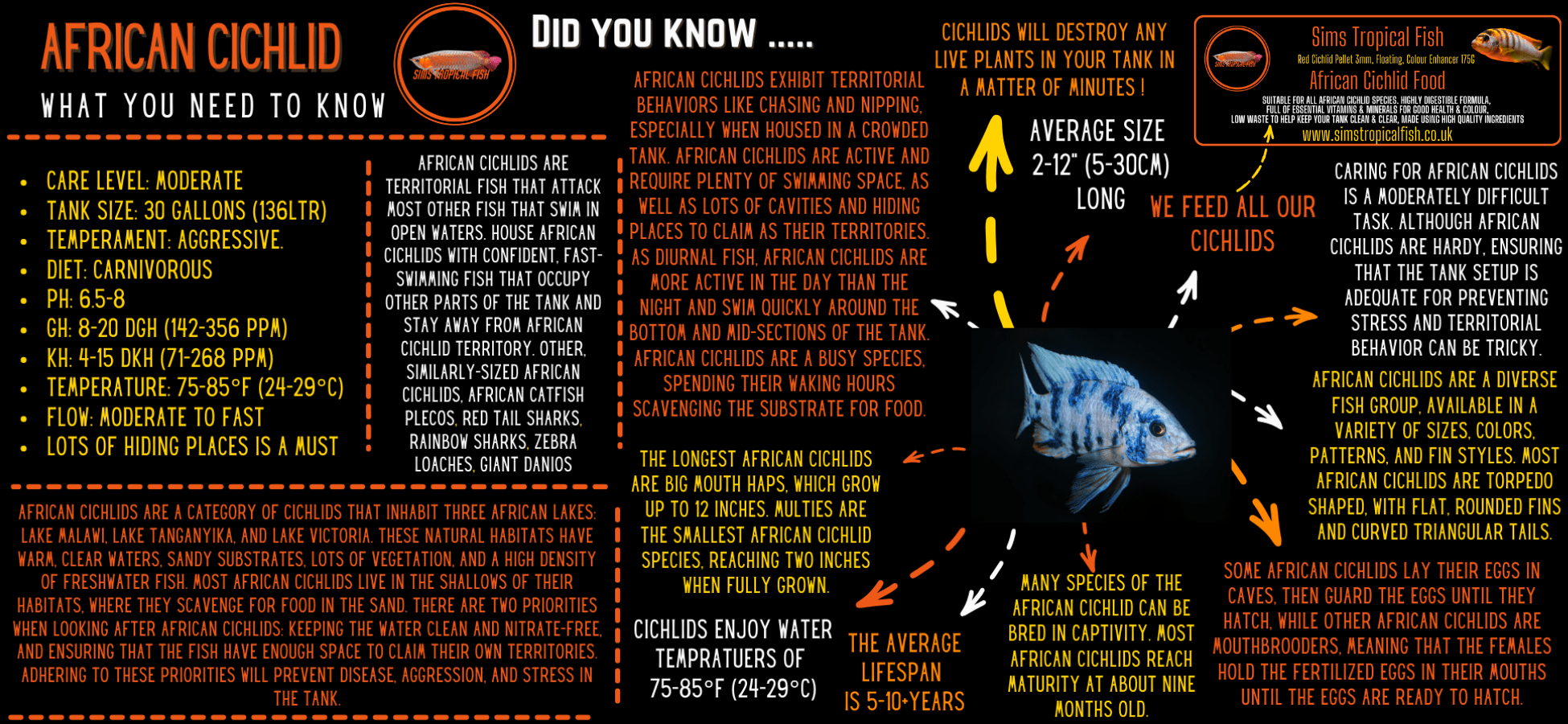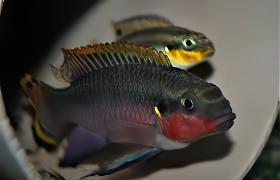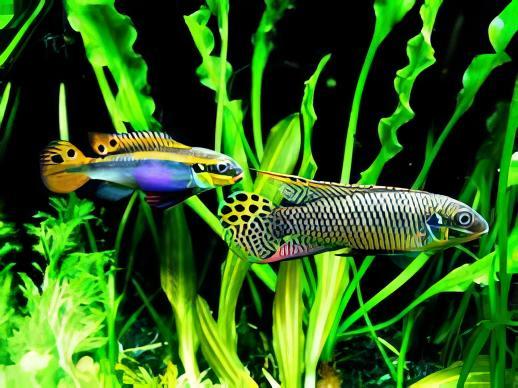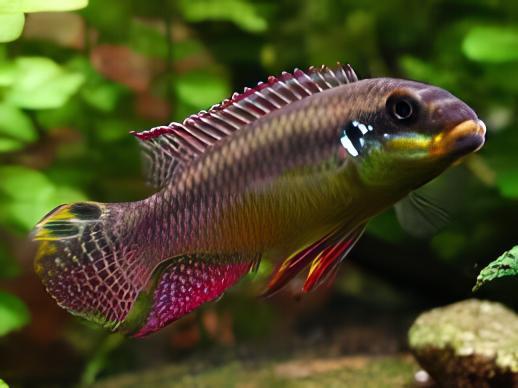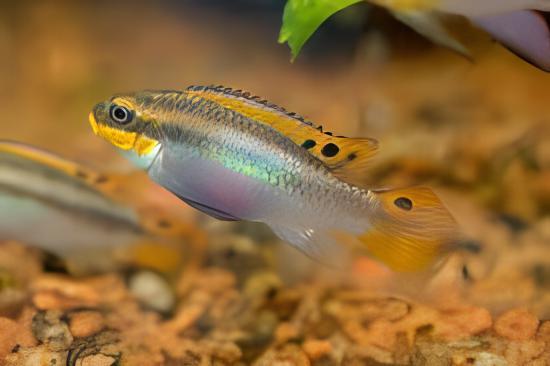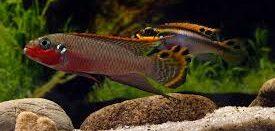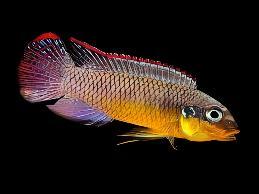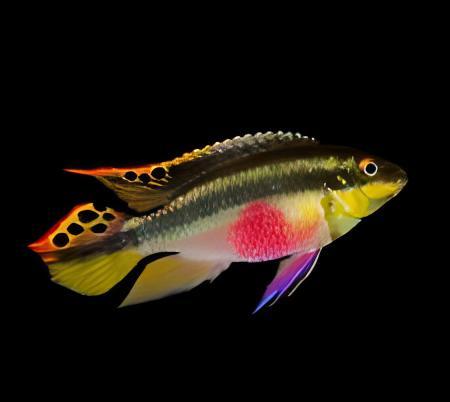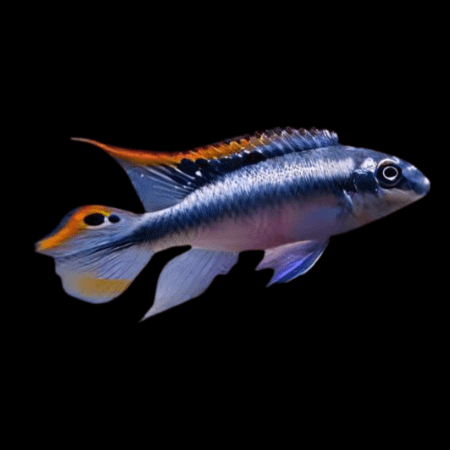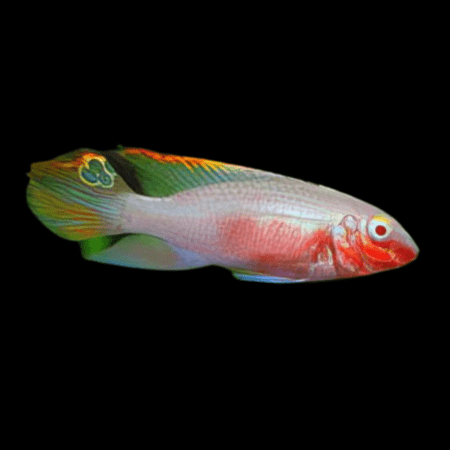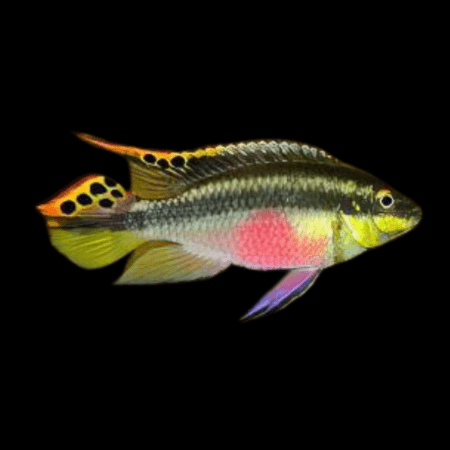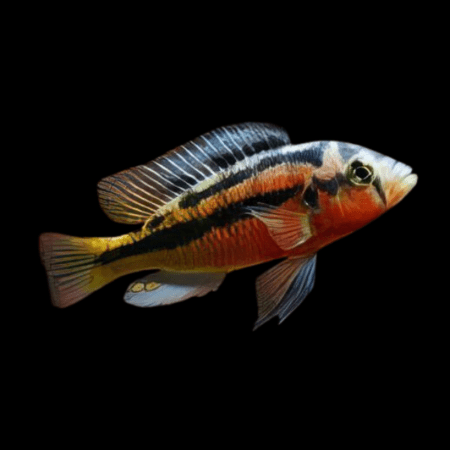Description
Striped Kribensis Cichlid Pelvicachromis Taeniatus
The pelvicachromis taeniatus (formerly Parachromis taeniatus) is commonly known as the striped kribensis, or pleco for short. It is a type of cichlid fish that hails from African freshwater lakes, and it can be distinguished by its solid colouring and three orange-yellow colour that run along the length of its body.
The pelvicachromis taeniatus fish species is one of the most popular types of freshwater aquarium fish kept in the pet trade today. This article will provide you with some basic information on the striped kribensis, including care, feeding, and tank requirements to help ensure your success with this particular species of fish.
Additionally, you’ll find some information on how to breed this fish species so that you can continue to build your stock of these interesting-looking pets without having to purchase them from pet stores.
Pelvicachromis taeniatus is the common name for what’s scientifically known as the striped kribensis, or Taeniacara dorsalis, which belongs to the Cichlidae family of fishes. This species originates from the Kwango River in Angola and the Central African Republic, where it’s still found today. It was first described in 1908 by two scientists who were traveling through Africa, at which time they officially named it Pelvicachromis taeniatus.
You may have heard of the term kribensis before and not know exactly what it meant. Pelvicachromis taeniatus, or striped kribensis, has long been kept as a freshwater aquarium fish by fish keepers around the world. It is most popular in North America and Europe, with fish keepers in China, Japan, Korea, and other parts of Asia commonly keeping this species as well.
The striped kribensis is also sometimes referred to as the German blue-streak kribs, though you should never refer to it by that name!
Origin and descriptions
The striped Kribensis is a small schooling cichlid that originated in East Africa. It is named after David Kribs, a fish importer who first imported them into California in 1979. Pelvicachromis taeniatus are most commonly found on Lake Malawi, but also inhabit other areas including South Africa’s Limpopo River Basin and Victoria Falls in Zimbabwe.
This species prefers slightly alkaline waters with medium to high water quality. While they can tolerate up to 500ppm of nitrate, they prefer levels below 200ppm. They spawn year-round in warmer waters such as those of central California, but depending on location, they tend to spawn during different times of the year. In Malawi, spawning typically occurs between October and March; in Zimbabwe, it tends to occur during March through June.
The Striped Kribensis is commonly referred to as a krib or krappy. They are very active fish that can grow up to 5 inches in length but should be kept in an aquarium of at least 15 gallons so they have room to move around. They live on land by climbing up submerged roots or rocks, hence their nickname, carpet sharks. Their natural habitat is the rivers and streams of West Africa from Guinea to Nigeria.
This species prefers warm water temperatures of 72-82 degrees Fahrenheit with a pH range between 6.5 and 7.0, hard water preferred. These are schooling fish and do best when maintained in groups of 8 or more individuals, preferably one male to four females since males can get aggressive with each other if not enough females are present.
Species profile
The pelvicachromis taeniatus, or striped kribensis as it is commonly known, is a species of fish that belongs to the mbuna cichlid group. This group of fish originates from Lake Malawi in Africa. The striped kribensis is native to Lake Malawi but has been introduced into other nearby lakes such as Lake Malombe.
They are generally regarded as one of the easiest fish to keep due to their peaceful nature and lack of aggressive behaviour toward other tank mates. In addition, keeping these fish is relatively simple because they are only found in freshwater habitats ranging from soft acidic water conditions with plants growing densely throughout their habitat to slightly harder alkaline waters with few plants growing sporadically throughout their environment.
Keeping Pelvicachromis taeniatus requires basic aquarium equipment including a filter system and an aquarium heater.
Habitat
Pelvicachromis taeniatus lives in a freshwater environment. They can be found at depths of 1-2 feet and in waters that have temperatures between 72-82 degrees Fahrenheit. While juveniles can live in small tanks, adults need to live in tanks with plenty of room to swim back and forth.
These fish will not tolerate any other fish species or invertebrates living with them, so they should only be kept alone.
Pelvicachromis taeniatus size
This species can grow up to 2.8 inches (7.1 cm) in length.
Pelvicachromis taeniatus tank size
Although 10-15 gallons can work for breeding purposes when the fish are conditioned very well, For long-term, the minimum recommended tank size is 95 Litres (25 gallons)
Tank set up
The striped Kribensis should be kept in groups of at least six in an aquarium that is 50 gallons or larger. The tank needs to have plenty of hiding places so that they can feel secure, as they are territorial fish. A sandy substrate will make them more comfortable as well. It’s also important to maintain strong filtration and keep water quality high, especially if there are a lot of fish in your tank.
For proper pH levels, you’ll want to maintain somewhere between 6.8-7.2 pH. You’ll also need to test ammonia, nitrite, and nitrate levels on a regular basis; you’ll want to keep those numbers at 0 ppm. Water temperature should remain steady between 77°F-82°F. Lighting isn’t necessary for these fish because most live in areas where the lighting doesn’t exist anyway.
It would be okay to add one or two small aquarium plants since these fish won’t eat live plants. Just don’t expect them to survive long once introduced into your tank!
Pelvicachromis taeniatus tank mates
The striped Krib is a peaceful fish, and it will get along with most other similar-sized community fish. The only potential issue could come from its territorial nature; if you’re keeping more than one of these fish in your tank, keep an eye on them to make sure they’re not being bullied or threatened by another inhabitant
Otherwise, it can be housed safely with other docile bottom-dwellers like corydoras catfish.
Some good tank mates are Hemigrammus rhodostomus, Hyphessobrycon amandae, Otocinclus, Loricariids (e.g., Panaque nigrolineatus). Care should be taken to avoid overly large or aggressive fish.
Pelvicachromis taeniatus breeding
The pelvicachromis taeniatus is a mouth-brooder, like many of its cichlid relatives. Though they tend to be monogamous, they will be more willing to accept other fish into their territory if they are already holding eggs. Some hobbyists have reported success in spawning as early as 4 to 5 months into keeping these fish, but it’s not unusual for them to take upwards of 6 months.
They will choose a breeding site (usually caves or large crevices), and the female will lay her eggs while the male stands guard over her. When ready, he fertilises them by releasing sperm from his anal fin. He then tends to move on with life, leaving his mate to care for all newly hatched fry alone until maturity.
This can last up to three weeks at 80 degrees Fahrenheit, though some sources cite much shorter time periods at warmer temperatures—as little as 48 hours! Fry need brine shrimp nauplii and powdered foods until they reach approximately 2–3 inches when they can be moved onto frozen foods such as Mysis shrimp and bloodworms.
Female pelvicachromis taeniatus hold roughly between 200-400 eggs at a time, but average brood sizes range from 50–100 depending on the overall size of adult fish.
